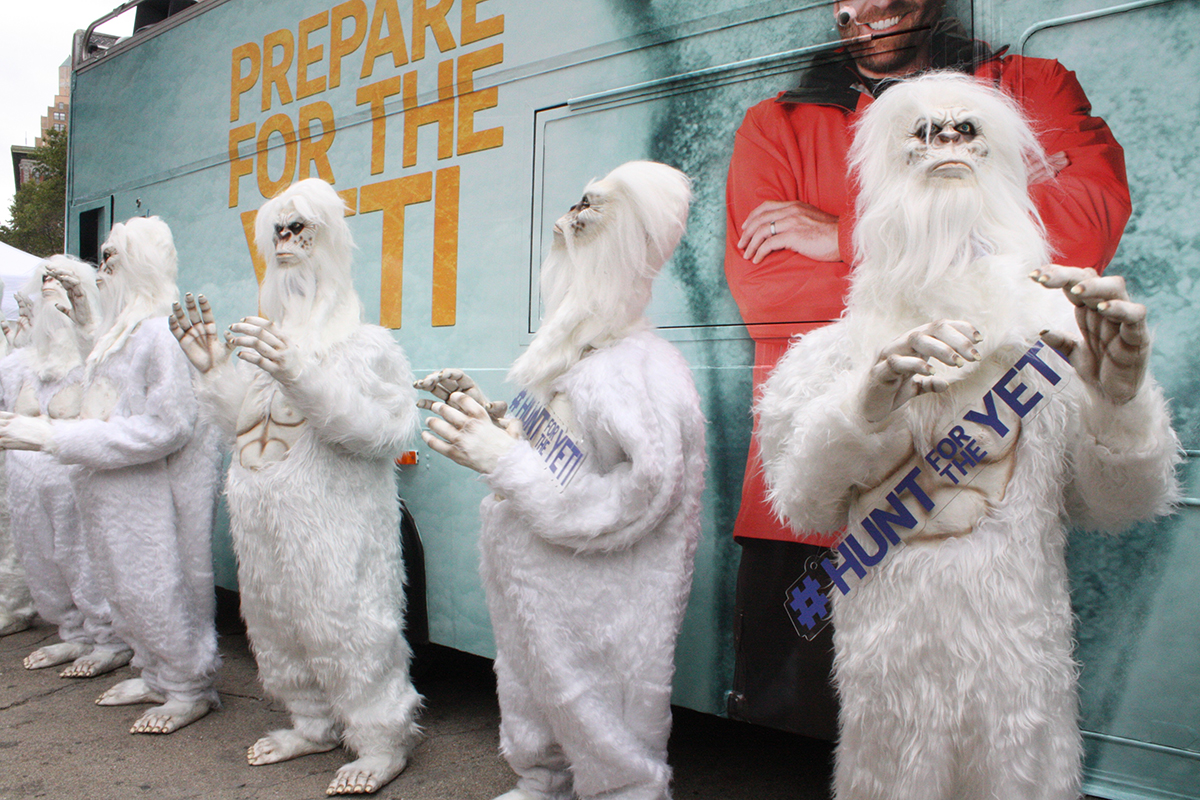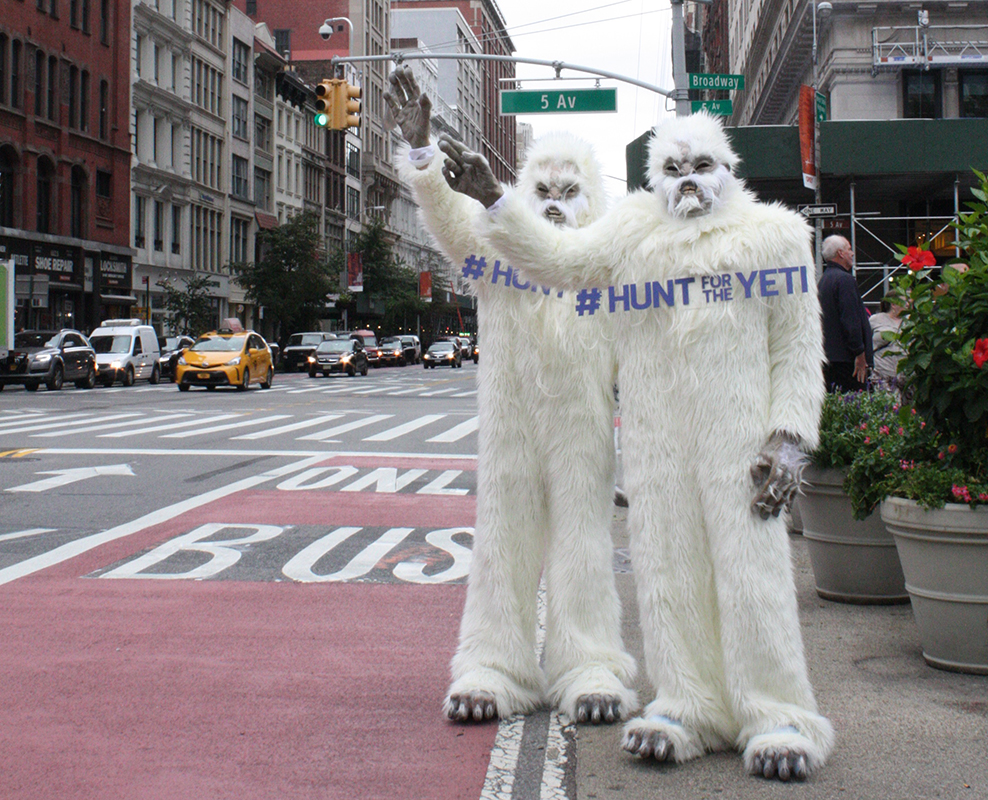'Yetis' Swarm Manhattan: The Lore of a Furry, Human-Like Beast

A group of alligators is known as a "congregation." A brace of barracudas is a "battery."
But what do you call a gathering of yetis?
Whatever the name might be, there were plenty of abominable snowmen to be seen in New York City today (Oct. 4), when 26 costumed cryptids rolled up to the iconic Flatiron Building in an open double-decker bus. Their visit heralded the Oct. 5 premiere of the Travel Channel special "Expedition Unknown: Hunt for the Yeti," an investigation by host Josh Gates of the elusive and mysterious humanoid creature said by some to inhabit the Himalayas. [Rumor or Reality: The Creatures of Cryptozoology]
Tales of the yeti — described as a bipedal animal standing 6 to 7 feet (about 2 meters) tall and covered with fur — have persisted in the Himalayas for hundreds of years, Gates told Live Science. Explorers from the West coined the name "abominable snowman" for the creature, saying it had white fur. But people living in the region told a different tale, Gates explained, describing yetis as having reddish-brown coats.
In recent decades, hikers, hunters and farmers in the Himalayas have continued to offer vague descriptions of a moving figure, glimpsed in remote areas, that did not resemble any known animal. However, conclusive proof that the yeti exists is yet to be found. A study published in 2014 in the journal Proceedings of the Royal Society B claimed to identify yeti DNA from hair samples, but analysis by other researchers later revealed that the hair likely belonged to a Himalayan brown bear.
Gates was intrigued by the myth of the yeti during an earlier visit to the Himalayas, and decided to return to conduct a more thorough search for "the truth behind the legend" for the Travel Channel, he said.

"It's hard to pin down when the stories started," Gates said. "They existed when the earliest Westerners came to Nepal, and they appear to be baked into the lore of the region. In a lot of ways, the yeti acts as proxy for the Himalayas' environment — if you don't respect the land, if you don't respect the animals, if you don't respect the dangers of the Himalayas, the yeti will come for you," he said.
Sign up for the Live Science daily newsletter now
Get the world’s most fascinating discoveries delivered straight to your inbox.
Yeti descriptions offered to Gates by Himalayan farmers, Sherpas and other locals tended to share many similarities, Gates explained. The figure glimpsed in a field or a forest would be tall, dark and walking on two legs — and the observers would insist that it wasn't a type of animal that they recognized. Skeptic generally say that "yetis" spotted in the wild are actually misidentified Himalayan brown bears, which are also covered in reddish-brown fur and can appear as tall as a human — or taller — when standing on their hind legs.
But the people Gates spoke to insisted they would recognize a bear, and that what they saw was something else entirely.
"These were very credible people who seemed shaken to the core," Gates told Live Science. "The more people you meet that have had compelling experiences, the more interesting it becomes, and the more I say to myself that there must be something going on here."
The "yetis" visiting New York were much more visible than the fabled and reclusive denizens of the Himalayas. But, as Gates pointed out, the Himalayas include vast reaches of unexplored wilderness where humans have never set foot and where unknown biodiversity could hide. Whether that includes large, hairy, human-like and camera-shy primates remains to be seen.
Original article on Live Science.

Mindy Weisberger is an editor at Scholastic and a former Live Science channel editor and senior writer. She has reported on general science, covering climate change, paleontology, biology and space. Mindy studied film at Columbia University; prior to Live Science she produced, wrote and directed media for the American Museum of Natural History in New York City. Her videos about dinosaurs, astrophysics, biodiversity and evolution appear in museums and science centers worldwide, earning awards such as the CINE Golden Eagle and the Communicator Award of Excellence. Her writing has also appeared in Scientific American, The Washington Post and How It Works Magazine. Her book "Rise of the Zombie Bugs: The Surprising Science of Parasitic Mind Control" will be published in spring 2025 by Johns Hopkins University Press.










